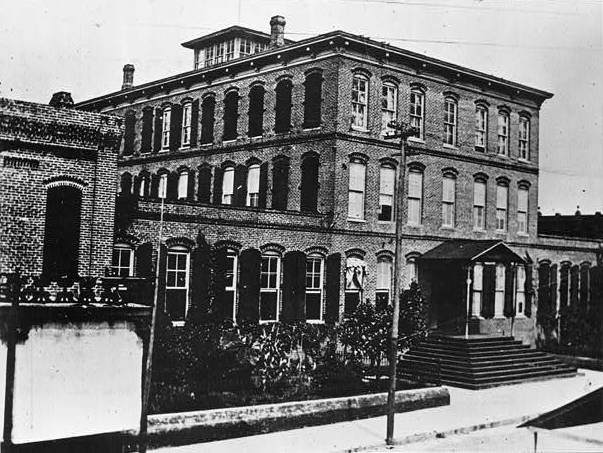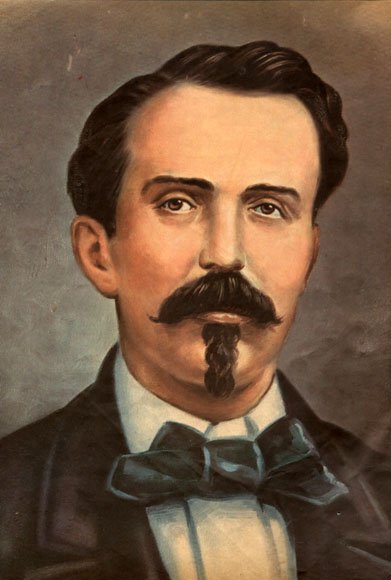|
Vicente Martinez Ybor
Vicente Martinez Ybor (7 September 1818 – 14 December 1896), was a Spanish entrepreneur who first became a noted industrialist and cigar manufacturer in Cuba, then Key West, and finally Tampa, Florida. Martinez Ybor is best known for his founding the immigrant-populated cigar manufacturing town of Ybor City just outside Tampa, Florida in 1885. It was annexed by Tampa in 1887 and was a major factor in the community's rapid development from a small town into one of the largest cities in Florida and, for a time, the world's leader in cigar manufacturing. In addition to his ''Principe de Gales'' line of Cuban cigars, he founded many other businesses in Tampa including an insurance company, street paving, gas stations, a streetcar line, and Tampa's first brewery. For his workers, he built and sold hundreds of affordable homes, brought doctors to the area, and converted his original cigar factory into a social hall and theater for Tampa's first mutual aid society, El Centro Español ... [...More Info...] [...Related Items...] OR: [Wikipedia] [Google] [Baidu] |
Valencia
Valencia ( va, València) is the capital of the Autonomous communities of Spain, autonomous community of Valencian Community, Valencia and the Municipalities of Spain, third-most populated municipality in Spain, with 791,413 inhabitants. It is also the capital of the Province of Valencia, province of the same name. The wider urban area also comprising the neighbouring municipalities has a population of around 1.6 million, constituting one of the List of coastal settlements of the Mediterranean Sea, major urban areas on the European side of the Mediterranean Sea. It is located on the banks of the Turia (river), Turia, on the east coast of the Iberian Peninsula, at the Gulf of Valencia, north of the Albufera lagoon. Valencia was founded as a Roman Republic, Roman colony in 138 BC. Al-Andalus, Islamic rule and acculturation ensued in the 8th century, together with the introduction of new irrigation systems and crops. Crown of Aragon, Aragonese Christian conquest took place in ... [...More Info...] [...Related Items...] OR: [Wikipedia] [Google] [Baidu] |
Ten Years' War
The Ten Years' War ( es, Guerra de los Diez Años; 1868–1878), also known as the Great War () and the War of '68, was part of Cuba's fight for independence from Spain. The uprising was led by Cuban-born planters and other wealthy natives. On 10 October 1868, sugar mill owner Carlos Manuel de Céspedes and his followers proclaimed independence, beginning the conflict. This was the first of three liberation wars that Cuba fought against Spain, the other two being the Little War (1879–1880) and the Cuban War of Independence (1895–1898). The final three months of the last conflict escalated with United States involvement, leading to the Spanish–American War. Background Slavery Cuban business owners demanded fundamental social and economic reforms from Spain, which ruled the colony. Lax enforcement of the slave trade ban had resulted in a dramatic increase in imports of Africans, estimated at 90,000 slaves from 1856 to 1860. This occurred despite a strong abolitionist m ... [...More Info...] [...Related Items...] OR: [Wikipedia] [Google] [Baidu] |
Streetcar
A tram (called a streetcar or trolley in North America) is a rail vehicle that travels on tramway tracks on public urban streets; some include segments on segregated right-of-way. The tramlines or networks operated as public transport are called tramways or simply trams/streetcars. Many recently built tramways use the contemporary term light rail. The vehicles are called streetcars or trolleys (not to be confused with trolleybus) in North America and trams or tramcars elsewhere. The first two terms are often used interchangeably in the United States, with ''trolley'' being the preferred term in the eastern US and ''streetcar'' in the western US. ''Streetcar'' or ''tramway'' are preferred in Canada. In parts of the United States, internally powered buses made to resemble a streetcar are often referred to as "trolleys". To avoid further confusion with trolley buses, the American Public Transportation Association (APTA) refers to them as "trolley-replica buses". In the United ... [...More Info...] [...Related Items...] OR: [Wikipedia] [Google] [Baidu] |
Casitas (homes For Cigar Workers In The Late 1800s) At The Musueum, Ybor City, Tampa
Casitas may refer to: * Casitas Dam, dam on Coyote Creek near Ojai, California * Lake Casitas Lake Casitas is a reservoir in Ventura County, California, built by the United States Bureau of Reclamation and completed in 1959. The project provides drinking water and water for irrigation. A secondary benefit is flood control. It was the ven ..., lake in Ventura County, California, formed by Casitas Dam * Casitas District, Contralmirante Villar, Peru {{geodis ... [...More Info...] [...Related Items...] OR: [Wikipedia] [Google] [Baidu] |
Mutual Aid Society
A benefit society, fraternal benefit society, fraternal benefit order, friendly society, or mutual aid society is a society, an organization or a voluntary association formed to provide mutual aid, benefit, for instance insurance for relief from sundry difficulties. Such organizations may be formally organized with charters and established customs, or may arise ''ad hoc'' to meet unique needs of a particular time and place. Many major financial institutions existing today, particularly some insurance companies, mutual savings banks, and credit unions, trace their origins back to benefit societies, as can many modern fraternal organizations and fraternal orders which are now viewed as being primarily social. The modern legal system essentially requires all such organizations of appreciable size to incorporate as one of these forms or another to continue to exist on an ongoing basis. Benefit societies may be organized around a shared ethnic background, religion, occupation, geog ... [...More Info...] [...Related Items...] OR: [Wikipedia] [Google] [Baidu] |
Ybor Factory Building
The Ybor Factory Building is a historic site in Tampa, Florida, United States located at 1911 North 13th Street. The main factory and its surrounding support buildings cover an entire city block between 8th Avenue and 9th Avenues and 13th and 14th Streets in the Ybor City Historic District section of the Ybor City neighborhood. C. E. Parcell is credited as the building's architect. History The factory was built in 1886 by Vicente Martinez-Ybor as he moved the production of his ''Príncipe de Gales'' ("Prince of Wales") cigar line from Key West to the new company town he founded just northeast of Tampa in 1885. The headquarters of Ybor's holding company was directly across 9th Avenue in the El Pasaje building, which was constructed at about the same time. The three-story structure was the first brick cigar factory in Tampa and the largest cigar factory in the world at the time. Over the next few decades, skilled ''tabaqueros'' (cigar makers) would roll hundreds of millions of ciga ... [...More Info...] [...Related Items...] OR: [Wikipedia] [Google] [Baidu] |
Florida Scrub
Florida sand pine scrub is an endangered subtropical forest ecoregion found throughout Florida in the United States. It is found on coastal and inland sand ridges and is characterized by an evergreen xeromorphic plant community dominated by shrubs and dwarf oaks. Because the low-nutrient sandy soils do not retain moisture, the ecosystem is effectively an arid one. Wildfires infrequently occur in the Florida scrub. Most of the annual rainfall (about ) falls in summer. It is endangered by residential, commercial and agricultural development, with the largest remaining block in and around the Ocala National Forest. Lake Wales Ridge National Wildlife Refuge also holds a high proportion of remaining scrub habitat, while the Archbold Biological Station near Lake Placid contains about of scrub habitat and sponsors biological research on it. Plant communities There is a high level of endemism in the flora and fauna, including an estimated 40 species of plants, 4 vertebrates and at least ... [...More Info...] [...Related Items...] OR: [Wikipedia] [Google] [Baidu] |
Steamship
A steamship, often referred to as a steamer, is a type of steam-powered vessel, typically ocean-faring and seaworthy, that is propelled by one or more steam engines that typically move (turn) propellers or paddlewheels. The first steamships came into practical usage during the early 1800s; however, there were exceptions that came before. Steamships usually use the prefix designations of "PS" for ''paddle steamer'' or "SS" for ''screw steamer'' (using a propeller or screw). As paddle steamers became less common, "SS" is assumed by many to stand for "steamship". Ships powered by internal combustion engines use a prefix such as "MV" for ''motor vessel'', so it is not correct to use "SS" for most modern vessels. As steamships were less dependent on wind patterns, new trade routes opened up. The steamship has been described as a "major driver of the first wave of trade globalization (1870–1913)" and contributor to "an increase in international trade that was unprecedented in hu ... [...More Info...] [...Related Items...] OR: [Wikipedia] [Google] [Baidu] |
Plant System
The Plant System named after its owner, Henry B. Plant, was a system of railroads and steamboats in the U.S. South, taken over by the Atlantic Coast Line Railroad in 1902. The original line of the system was the Savannah, Florida and Western Railway, running across southern Georgia. The Plant Investment Company was formed in 1882 to lease and buy other railroads and expand the system. Other major lines incorporated into the system include the Savannah and Charleston Railroad and the Brunswick and Western Railroad. History The Atlantic and Gulf Railroad went bankrupt on January 1, 1877, and Henry Plant bought it on November 4, 1879, reorganizing it as the Savannah, Florida and Western Railway on December 9. Plant bought the Savannah and Charleston Railroad (opened 1860) in 1880, reorganizing it as the Charleston and Savannah Railway. That acquisition extended the line from Savannah northeast to Charleston, South Carolina, where the Ashley River Railroad (operated by the C&S ... [...More Info...] [...Related Items...] OR: [Wikipedia] [Google] [Baidu] |
Gavino Gutierrez
Gavino Gutierrez (26 October 1849 – 8 March 1919), a Spanish immigrant to the United States, was an importer, architect, civil engineer, and surveyor. He was responsible for bringing Vincente M. Ybor to Tampa, Florida and for designing Ybor City. Birth and background Gutierrez was born on October 26, 1849 in San Vicente de la Barquera, located in the northern Spanish province of Santander. He left Spain for Cuba as a young man, where he worked in a store. In 1868, at the age of 19, Gutierrez moved to New York City. During his first month in New York, he worked as a bellhop and established an import-export business, selling goods from Spain, Cuba, and Mexico. In addition, he studied architecture, engineering, surveying, and English, eventually becoming a civil engineer. Arrival in Tampa Gutierrez had a friend named Bernardino Gargol, who owned marmalade and guava paste factories in Cuba, and was also a native Cuban who lived in New York and ran an import-export business. Ga ... [...More Info...] [...Related Items...] OR: [Wikipedia] [Google] [Baidu] |
Galveston, Texas
Galveston ( ) is a coastal resort city and port off the Southeast Texas coast on Galveston Island and Pelican Island in the U.S. state of Texas. The community of , with a population of 47,743 in 2010, is the county seat of surrounding Galveston County and second-largest municipality in the county. It is also within the Houston–The Woodlands–Sugar Land metropolitan area at its southern end on the northwestern coast of the Gulf of Mexico. Galveston, or Galvez' town, was named after 18th-century Spanish military and political leader Bernardo de Gálvez y Madrid, Count of Gálvez (1746–1786), who was born in Macharaviaya, Málaga, in the Kingdom of Spain. Galveston's first European settlements on the Galveston Island were built around 1816 by French pirate Louis-Michel Aury to help the fledgling empire of Mexico fight for independence from Spain, along with other colonies in the Western Hemisphere of the Americas in Central and South America in the 1810s and 1820s. The Po ... [...More Info...] [...Related Items...] OR: [Wikipedia] [Google] [Baidu] |





.jpg)



